Excerpts from Jim Conrad's
Naturalist Newsletter
from the August 14, 2016 Newsletter issued from Hacienda Chichen Resort beside Chichén Itzá Ruins; limestone bedrock; elevation ~39m (~128ft), N20.675°, W88.569°; central Yucatán state, MÉXICO
CHOCOLATE HABANEROS, & BEYOND
In the Hacienda's organic garden, rooted atop a traditional Maya kanché, the Maya gardeners Paulino and Pedro have some pepper plants growing, as shown below:
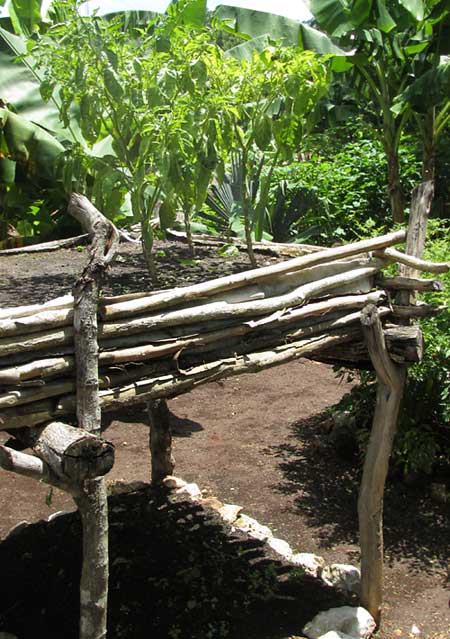
At first I thought the chilies forming on them would mature into regular habaneros, but they never seemed to mature to the typical red state. Maybe they were being picked before they got red. But week after week passed and the older chilies only managed to turn brown, as are those shown below:
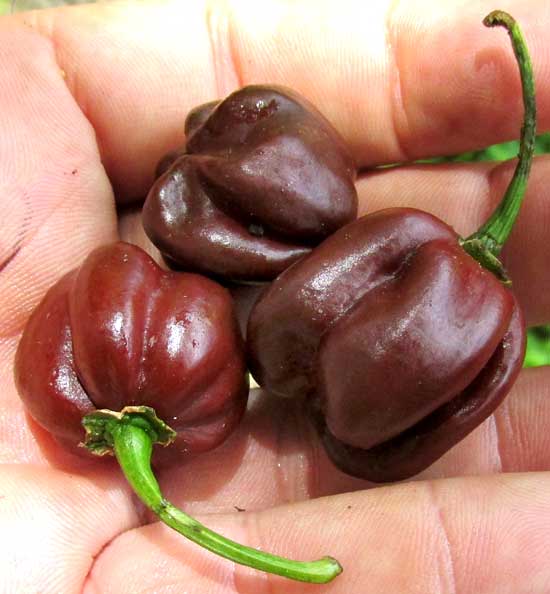
Finally I spoke to Paulino about it, who knows all things dealing with modern Maya life. He told me that he knew of three kinds of habaneros: red; white, and brown ones. These were the brown ones.
Looking more into the matter, on the Internet I found that Paulino's three habanero cultivars are just the beginning of a rainbow of habanero types and varieties. At the http://www.HabaneroMadness.Com website, 18 are listed, with such names as Caribbean Red, Condor's Beak, Golden and Mustard Habaneros, Scotch Bonnets, Peach and Peruvian White Habaneros, White Giants, Jamaican Chocolate, and more.
So, chocolate habaneros are growing on the kanché, but I have no idea which chocolate cultivar they are. They look liked Jamaican Hot Chocolates, which seems to be popular commercially, but that one is said to have originated in Jamaica. Though in most of Mexico the jalapeño is the main red pepper, in the Yucatan Peninsula habaneros are the overwhelming favorite. There's a good chance that what's on the kanché is an old type, maybe one that hasn't received a commercial name.
The world of chili-pepper taxonomy is rich and complex. Habaneros often are given the technical binomial Capsicum chinense, but many experts lump them into the larger species Capsicum annuum. A 2008 paper by RL Jarret and Terry Bere, appearing in HortScience 43(6) describe the genus Capsicum as embracing five cultivated species: Capsicum annuum, baccatum, frutescens, pubescens, and chinense. In Capsicum chinense, the habanero genus, the distinguishing field mark for the species is a constriction of the calyx. A side view of a flower on one of our kanché plants is shown below:
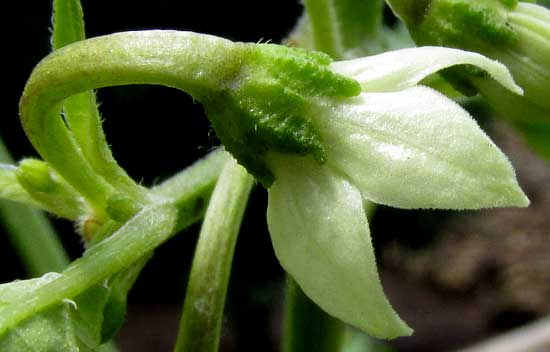
I suppose that the constriction is the slightly narrowed area below the sepal bases.
On the ground next to the kanché the gardeners have sown very closely together numerous red peppers of another kind, so that the plants form a waist-high bouquet, as seen below:
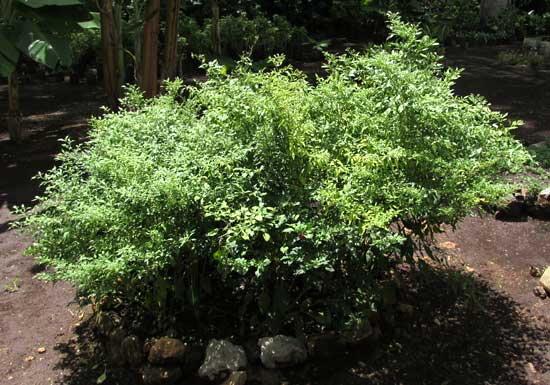
The plentiful peppers forming on these plants are much smaller and turn red like regular habaneros, are hot like regular habaneros, and their calyxes seem to show the same hint of a constriction observed on the kanché's chocolate habaneros, as shown below:
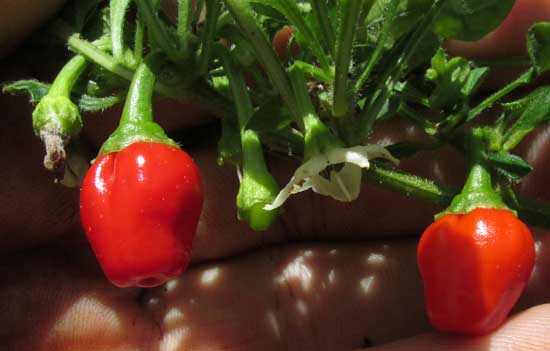
Paulino doesn't think of these as habaneros, though. He calls them chili verde, meaning green chilies, though he clearly sees that they mature red. I don't know what to make of that. On the Internet our small peppers from plants on the ground beside the kanché look very much like those marketed as Red Dwarf Habaneros.
Often it's stated that habaneros are native to the Yucatan, but the above-mentioned 2008 HortScience paper says that the ancestral Capsicum chinense appears to have its origins in the western Amazon River basin, while the oldest known occurrence of Capsicum chinense is a 6500-year-old pod found intact in a cave in Peru. However, if habanero-type Capsicum chinense peppers were introduced into the Yucatan by the Spanish 500 years ago, there's been plenty of time for numerous cultivars to have been developed here in the Yucatan, some of them not to be found elsewhere.
Whatever the case, it's a real treat to see these old cultivars being grown here, and it's a treat to eat them along with my daily meal of beans, eggs and tortillas. Regular habaneros are so hot that I don't notice much taste to them, but the chocolate ones, to me, add a smokey flavor I associate with barbecue from back in my non-vegetarian childhood in Kentucky. The flavor doesn't register when the peppers are eaten alone, but comes out when diced and mixed with fried eggs and beans, with added oil, vinegar and lime juice.